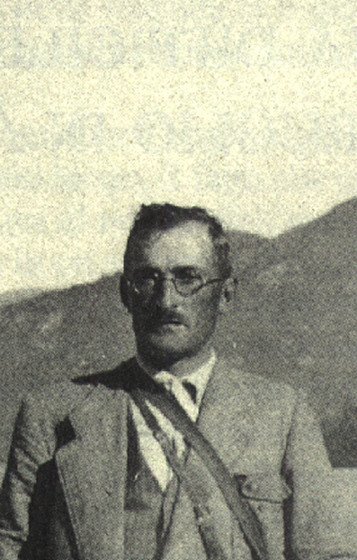
Egidio Feruglio
Dr. Feruglio was an Italian geologist and paleontologist who worked in the Argentine Patagonia in the 1930s.
He was born on September 1, 1897 in Felletto Umberto, Province of Udine, Italy.
In 1920 he doctorate in Natural Sciences at the University of Florence.
In 1925 he moved to Argentina as a geologist, joining the then Council of Public Oilfields, acting as Head of Geological Services in Patagonia.

In 1940 he taught at the School of Agronomy of the University of Cuyo, while he was founder and director of the Institute of Petroleum.
At the returning to his country in 1949, he was Professor of Geology at the University of Torino and then at the University of Rome.
Between 1923 and 1954 he made 110 publications on paleontology, geology and geography of the Alps and Apennines, Sardinia, Argentina and Uruguay. He was a member of scientific societies from several countries and honoured with awards like: Gasperi GB Physical Geography, Academia Nazionale dei Lincei and the Perito Moreno Prize (1952) of the Society of Geographical Studies for his work “Geological description Patagonia”.
Dr. Feruglio made numerous contributions to paleontology, especially in the Patagonia region, where he made use the fossil record to solve numerous geological problems.
Publications on findings made in Argentina, compiled issues of invertebrates and fossil plants, and particularly Cretaceous Mesozoic and Tertiary mollusks and plants in Patagonia. Among his works, is worth to mention his “Paleontologìa Patagonica” of 1936, with fossiliferous descriptions of the region between Lake Nahuel Huapi and Tierra del Fuego.
Feruglio’s work is characterized by abundance, detail and thoroughness of the information it contains, so it deserves to be called “The Patagonia stratigrapher”. The “Geological description Patagonia” written 60 years ago, is still used as reference text in current days.
Feruglio died in his hometown on July 4, 1954. Notably, although it has endured through his work, little has been written about his life. Therefore, 56 years after his death, we remember this foreign scientist -definitively incorporated into the country’s history- naming in his honour this Paleontological Museum located in the Patagonia Argentina.